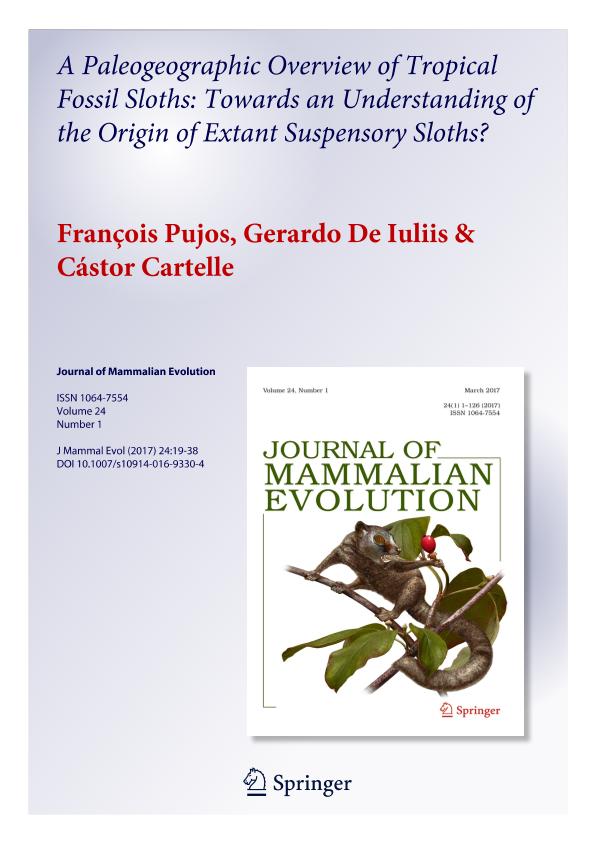Artículo
A Paleogeographic Overview of Tropical Fossil Sloths: Towards an Understanding of the Origin of Extant Suspensory Sloths?
Fecha de publicación:
03/2017
Editorial:
Springer
Revista:
Journal of Mammalian Evolution
ISSN:
1064-7554
e-ISSN:
1573-7055
Idioma:
Inglés
Tipo de recurso:
Artículo publicado
Clasificación temática:
Resumen
Modern sloths are among the more characteristic mammals of South and Central American faunas. Recent discovery in four Paleogene, 22 Neogene, and dozens of Pleistocene fossiliferous localities in the tropics has revealed an unexpected paleobioversity constituted by some 81 fossil sloth species. Probably originating in southern South America near the Eocene/Oligocene transition, sloths were represented in the tropics during the late Oligocene by Pseudoglyptodon, Mylodontidae, and Megalonychidae. The latter occupied the West Indies between at least the late early Miocene and late Pleistocene, and two mylodontid clades, Octodontobradyinae and Urumacotheriinae, were characteristic of Amazonian localities from the Colhuehuapian and the Laventan periods, respectively, until the end of the Miocene. Megatheriinae and Nothrotheriidae appeared during the middle Miocene, colonizing the tropics and then North America, where Mylodontidae and Megalonychidae had already been present since the early late Miocene. Nothrotheriids are more abundant and diversified during the late Miocene in the tropics than in southern South America. Remains closely related to either of the modern sloths are absent from the fossil record, including those in the tropics. The characteristic suspensory posture of Bradypus and Choloepus appeared independently and likely after the Miocene epoch, and thus well after the hypothesized split suggested by molecular studies of the respective clades of these genera. Given their current widespread distribution in and reliance on the tropics, prospecting efforts for the direct fossil kin of suspensory sloths should concentrate on deposits in the Amazonian region, as this area has shown promise in producing fossil sloths.
Palabras clave:
Neogene
,
Paleogene
,
Pleistocene
,
Sloths
,
Systematics
,
Tropics
Archivos asociados
Licencia
Identificadores
Colecciones
Articulos(IANIGLA)
Articulos de INST. ARG. DE NIVOLOGIA, GLACIOLOGIA Y CS. AMBIENT
Articulos de INST. ARG. DE NIVOLOGIA, GLACIOLOGIA Y CS. AMBIENT
Citación
Pujos, François Roger Francis; De Iuliis, G.; Cartelle, C.; A Paleogeographic Overview of Tropical Fossil Sloths: Towards an Understanding of the Origin of Extant Suspensory Sloths?; Springer; Journal of Mammalian Evolution; 24; 1; 3-2017; 19-38
Compartir
Altmétricas




